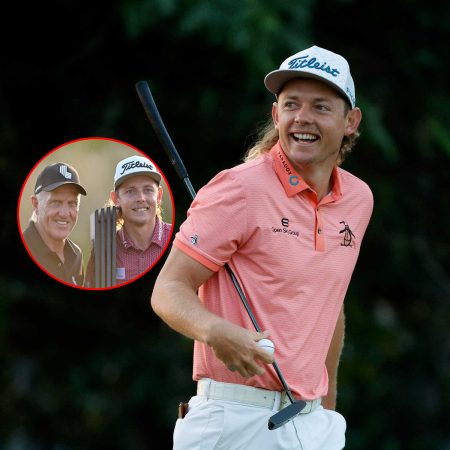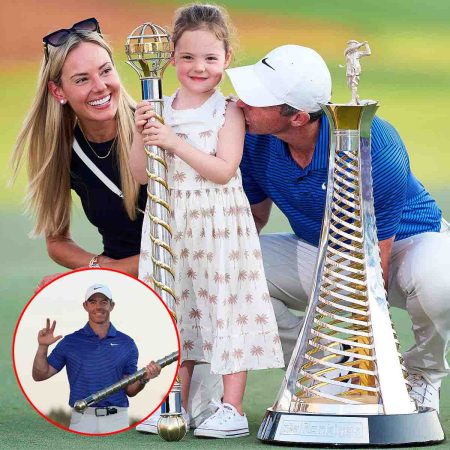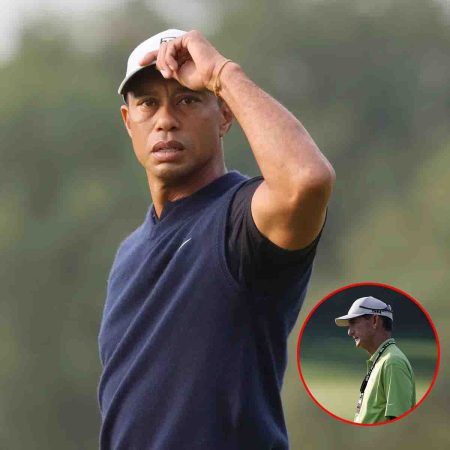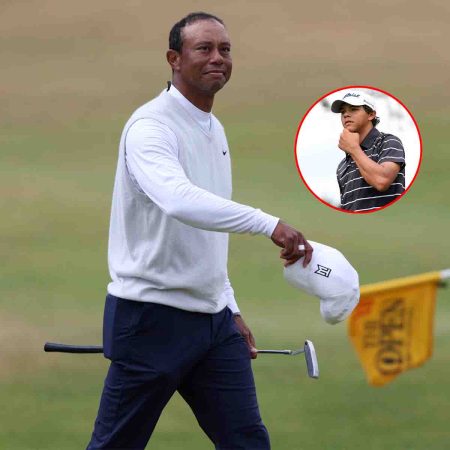There was a time, not long ago, when color and race actually took center stage in the NBA. People couldn’t look out on the court and see only basketball players for their level of skill and not the color of their skin. Now, skin color should have nothing to do with your skills as a basketball player. If you can play, you can play, which is the bottom line, but it did once divide a nation when the world was not so understanding or accepting.
The NBA has come a long way from the days when they didn’t even allow African-Americans to play to today when these men are the greatest ambassadors the game has ever had over the past 76 years. The truth is that racial undertones and divide have had their place in NBA history, albeit a terrible one, and to not admit that would simply be ignorant of how far the NBA has come since what Bill Russell, Wilt Chamberlain, and other African-American players had to endure in the 50s, 60s, and well beyond with slurs, personal attacks, and fear for the safety of their families among so many other horrific things.
While the shift in talent and stardom changed in the NBA, and rightfully so, there are a handful of white players who rose to the top as well and carved out legacies worthy of conversation. These players are former NBA champions, MVP winners, and some of the biggest names in basketball history. These 20 players below are among the greatest, not because of their skin tone or whatever false narrative that anybody would like to push, but for their contributions to the game over a long span of NBA history. If there is anything you take away from this list, it should be that no matter what you look like, if you can play ball, you have a spot in NBA history. It is up to you to go out and earn it.
These are the 20 greatest white players in NBA history.
20. Jerry Lucas
Credit: Fadeaway World
Jerry Lucas made his NBA debut in 1963 with the Cincinnati Royals after sitting out one year to settle a contractual dispute. When he finally hit the floor, it was clear why he wanted more money to play. Lucas would take home Rookie of the Year and earn an All-Star appearance for the 1963-64 season with 17.7 PPG and 17.4 RPG. Over the next two seasons, Lucas would do something that very few NBA players can lay claim to. He would average over 20.0 PPG and 20.0 RPG in each of the 1965 and 1966 seasons, a feat so rare that only Wilt Chamberlain, Bob Pettit, and Nate Thurmond have accomplished it otherwise.
Lucas would spend six and a half seasons with the Royals paired with Oscar Robertson, but they were never able to take home an NBA championship. Lucas would play for the Warriors for two seasons, where he averaged 17.5 PPG and 15.2 RPG in 143 appearances. In 1971, Lucas headed east to join the New York Knicks and helped them advance to back-to-back NBA Finals in 1972 and 1973. Lucas was coming off the bench at this point in his career and received just over 18.0 minutes of playing time in the 1973 Finals. He was finally able to say he was an NBA champion, though, as the Knicks defeated the Lakers in 1973, with Lucas contributing 7.6 PPG and 4.6 RPG off the bench.
19. Bill Walton
Credit: Malcolm Emmons-USA TODAY Sports
Bill Walton is one of those players we would be talking about completely differently had injuries not hindered his career trajectory. Walton was the first overall pick by the Portland Trail Blazers in the 1974 NBA Draft and was thought to be the next big thing coming out of UCLA. Big Red was a rebounding and defensive machine who had no problem going toe-to-toe with the best big men that the game had to offer on any given night. Walton would play just 35 games in his rookie season, but from there, he provided a few years of true greatness.
Walton earned his first All-Star selection in 1977 when he averaged 18.6 PPG and led the NBA in both blocks and rebounds with 14.4 RPG and 3.2 BPG. That season, he would lead the Trail Blazers to their only championship in franchise history while also claiming the Finals MVP with 18.5 PPG, 19.0 RPG, 5.2 APG, 1.0 SPG, and 3.2 BPG. He would have one more All-Star season in 1978 before an injury to his foot would limit him to just 14 games over the next four seasons. After a few seasons with the Clippers, Walton would join the Celtics for two seasons. In 1986, he was named Sixth Man of the Year in Boston and would help them win the NBA championship later that year.
18. Dave Cowens
Credit: Manny Rubio-USA TODAY Sports
Standing at just 6’9’’, Dave Cowens was considered to be heavily undersized as a center. If it wasn’t for Bill Russell’s insistence on drafting him, we may have never known who Dave Cowens was aside from a really good player that didn’t benefit from being in Boston. Cowens was all hustle and heart and, even as a big man, had no qualms with putting his body on the line to make a play or dive for a loose ball. In his first season, Cowens earned Rookie of the Year honors with the Celtics averaging 17.0 PPG and 15.0 RPG, and his career was off to a tremendous start.
Two seasons after his rookie year, Cowens would earn his second All-Star selection and the All-Star MVP award. Even more impressive that season was Cowens winning the MVP award with 20.5 PPG and 16.2 RPG while leading the Celtics to 68 wins. In 1974, Cowens would help the Celtics win an NBA championship, a feat that would repeat itself in 1976 as well. Overall, Cowens would earn eight All-Star selections in his career, along with three All-NBA Team selections and three All-Defensive Team selections. Let’s not mention the fact he told Kobe Bryant he wasn’t needed in Charlotte after they drafted him years later.
17. Paul Arizin
Credit: Fadeaway World
Before a man named Stephen Curry came along, the greatest shooter in Warriors history was Paul Arizin. Pitchin’ Paul was drafted third overall in the 1950 NBA draft by the Warriors and was immediately one of the better players in the league. In his first season, Arizin was named Rookie of the Year with 17.2 PPG and 9.8 RPG. The following season, Arizing led the NBA in both scoring with 25.4 PPG and field goal percentage at 44.8%. He then took two years off to serve in the U.S. Marine Corps before coming back and finishing out his Hall Of Fame career.
In his first season back, it was like he never left, as he played 72 games and averaged over 21.0 PPG. In 1956, Arizing led the Warriors to an NBA championship by averaging a whopping 28.9 PPG in the playoffs and 27.6 PPG and 8.0 RPG in the Finals over the Fort Wayne Pistons. He would win one more scoring title in 1957 with 25.6 PPG and remained an All-Star for the entirety of his career. Overall, he earned 10 All-Star appearances and four All-NBA Team selections in his 10-year career.
16. Pete Maravich
Credit: Malcolm Emmons – USA TODAY Sports
Before any of the flashy dribbles and passes you see in today’s game, Pistol Pete Maravich did it first. After scoring the competition averaging over 40.0 PPG in college at LSU, Maravich took his talents to the NBA, where his impact on the game really took hold. Maravich wowed audiences with the speed and control with which he played the game, as well as his incredible ability to score and facilitate for his teammates. Maravich debuted with the Hawks in 1970, where he would go on to earn two All-Star selections and averaged 24.3 PPG and 5.6 APG over the course of four seasons.
When Maravich moved on to the New Orleans Jazz, his legend only grew from there. Maravich would average at least 20.0 PPG in his first five seasons with the team. He would take home a scoring title in 1977 when he averaged 31.3 PPG on 42.1% shooting from the field in 49 games played. In his six seasons with the Jazz, he averaged 25.2 PPG and 5.6 APG on 43.4% shooting from the field. Overall in his career, Maravich earned five All-Star selections and four All-NBA Team selections and went down as one of the most influential players in NBA history.
15. Manu Ginobili
Credit: Bill Streicher-USA TODAY Sports
I know what you’re thinking. Manu Ginobili isn’t white! Well, technically, he is when you consider that he is of Italian descent and was born in Argentina. Regardless, Ginobili is one of the better players of any descent in NBA history, recently selected to have his career immortalized in the Naismith Basketball Hall Of Fame. Ginobili began his career as a relatively unknown shooting guard from overseas, but before his career was over, his name would be one that was never forgotten.
Ginobili finally made his NBA debut four seasons after being drafted in 2002-03. Coming off the bench as a rookie, Ginobili would help the Spurs take home an NBA championship against the New Jersey Nets. Ginobili would be a big part of the next three championships that San Antonio won as well, giving him four for his career. He earned his first All-Star appearance in 2005 and, in 2008, was named the NBA’s best bench player with Sixth Man of the Year honors. He would earn another All-Star selection in 2011 and retire from the game in 2018. Ginobili was also a member of two All-NBA Teams and helped Argentina nearly bury USA basketball at the Olympics in 2004.
14. Dolph Schayes
Credit: Fadeaway World
As the first modern NBA forward, Dolph Schayes was a rebounding and defensive mastermind of his time. Schayes played 15 seasons from 1950 thru 1964 with the Syracuse Nationals for 14 seasons and the 76ers for one season. In his debut season in 1950, the NBA wasn’t even keeping rebounding stats yet, but it was clear that Schayes was already among the top guys. In his second season with the Nationals, Schayes earned an All-Star appearance for the first time and averaged 17.0 PPG and a league-leading 16.4 RPG once they started keeping track.
Schayes would enter his peak as a player right around the 1954-55 season. He would average a career-high 18.5 PPG and 12.3 RPG in the regular season but saved his best work for the playoffs. In a seven-game Finals series against the Pistons, Schayes led the Nationals to an NBA championship with 19.0 PPG and 11.9 RPG but shot just 39.2% from the field. Over the next six seasons, Schayes would average at least 20.0 PPG and 12.0 RPG for Syracuse but never got back to lead them to a championship. Overall, he earned 12 All-Star selections and 12 All-NBA Team selections and was inducted into the Hall Of Fame in 1973.
13. Pau Gasol
Credit: Kirby Lee-USA TODAY Sports
Pau Gasol has also gone down as one of the great big men this game has ever seen. He was one of the most well-rounded bigs in the game’s history. He was a great athlete for his size and was an elite rebounder and interior defender. Gasol was no slouch on the offensive side of the ball, either. He could pass and score with the best of them, armed with a nice short jumper with perfect touch on the ball. Gasol always led by example and embedded a team-first mentality into every team he was a part of.
As the third overall pick of the 2001 NBA Draft, Gasol burst onto the scene with a Rookie of the Year campaign in 2002. He averaged 17.6 PPG, 8.9 RPG, and 2.1 BPG to claim the award and begin his career with a bang. He would earn his first All-Star appearance in 2006 with the Memphis Grizzlies, but it would be his time in Los Angeles from 2008 thru 2014 that cemented his legacy. Traded mid-season to Los Angeles in 2008, Gasol would help the Lakers capture two NBA championships in 2009 and 2010. He was the perfect player next to a prime Kobe Bryant to deliver titles back to L.A. and restore normalcy to their basketball culture. He retired as a six-time All-Star and four-time All-NBA Team selection in 2019.
12. Kevin McHale
Credit: RVR Photos-USA TODAY Sports
Kevin McHale was brought to Boston by luck in one of the most lopsided trades in NBA history. The move opened up McHale as a player, and he transformed from an impactful player off the bench into one of the most well-rounded power forwards ever. For the first five seasons of his career, from 1981 thru 1985, McHale was a premier player off the bench that earned his first All-Star appearance in 1984. He would win back-to-back Sixth Man of the Year awards in 1984 and 1985 and won two championships during that span.
When he became the full-time starter in 1986, the winning didn’t stop for Boston, who had cemented themselves as one of the best dynasties ever. McHale was now a 20.0 PPG scorer who was also bringing 2.0 BPG and 8.0 RPG to the table as well. The Celtics would go on to win a third NBA championship in 1986, with McHale being a key factor on both ends of the court. Overall, he would win three titles and earn seven All-Star appearances, six All-Defensive Team selections, and one All-Defensive Team selection in his career.
11. George Mikan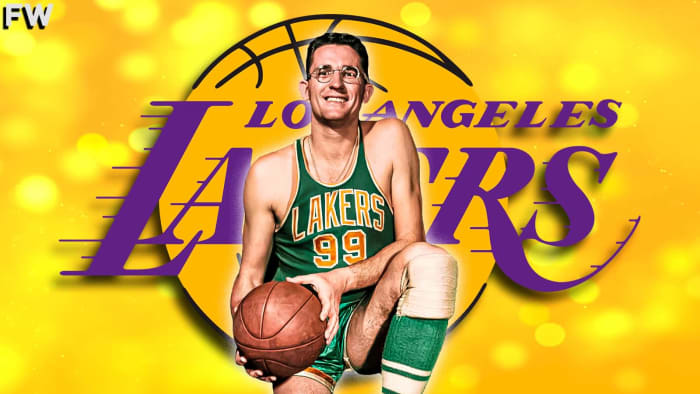
Credit: Fadeaway World
George Mikan was the NBA’s first superstar in his early days as a Minneapolis Laker and is credited for starting the rich legacy that was passed down for generations. To begin his career, Mikan was clearly the best player on the court, standing 6’10’’ and towering over the competition. Mikan would win three scoring titles in his first three seasons, averaging 28.0 PPG on 41.7% shooting. Mikan was also a defensive stud and controlled games with his rebounding and finishing abilities.
Not only was Mikan a scoring champion right away, but he led the Lakers to two NBA championships in his first two seasons as well. In the playoffs, Mikan averaged 30.9 PPG over the course of those title runs as he delivered the first titles in team history. After missing out on the championship in 1951, Mikan would lead the Lakers on a tremendous run once again, three-peating as NBA champions from 1952 thru 1954. On this three-peat, Mikan averaged 21.0 PPG and 14.8 RPG. After the third title concluded, Mikan retired from the game before giving it one more chance for 37 games in 1956. He retired as a four-time All-Star and six-time All-NBA Team selection.
10. Bob Cousy
Credit: Telegram & Gazette-USA TODAY Sports
Bob Cousy is one of the first innovative and influential point guards to ever step on a basketball court. Cousy was nicknamed The Houdini of the Hardwood for the speed with which he played, as well as the scintillating dribbling display he would put on every night. He was also known for his dazzling passes that made teammates better whenever they shared the court with him and helped the Celtics claim six NBA titles in his career. Cousy began his career in 1950, and by 1953, he was the game’s best passer and point guard.
Cousy would win eight straight assists titles from 1953 thru 1960, and he would also claim the 1957 MVP award. Cousy was named MVP, averaging 20.6 PPG and 7.5 APG as he led the Celtics to an NBA championship alongside Bill Russell and others. Cousy would end his career in Boston with five straight NBA championships from 1959 thru 1963, with the final one being the most special as a sendoff to his career. Cousy played 13 seasons in the NBA and was a 13-time All-Star, six-time NBA champion, and 12-time All-NBA Team selection.
9. Nikola Jokic
Credit: Ron Chenoy-USA TODAY Sports
Nikola Jokic has just turned 28 years old and is already considered to be one of the best offensive players I have ever seen. Jokic does it all on the offensive side of the ball, including scoring, passing, and rebounding the ball for second-chance opportunities. His court vision is second to none as far as any NBA players go let alone the ones in his position of center. Jokic can hit any pass at any moment so his teammates are always on alert whenever the ball is in his hands. It took four seasons for Jokic to adjust to the NBA and once he did, he took over.
After debuting in 2015, Jokic would become an All-Star by the 2018-19 season. Since that time, Jokic has averaged 23.5 PPG, 11.3 RPG, and 8.9 APG for the Nuggets. In 2021, Jokic was awarded his first MVP award, averaging 26.4 PPG, 10.8 RPG, and 8.3 APG. He was given back-to-back MVPs in 2022 averaging 27.1 PPG, 13.8 RPG, and 7.9 APG. In 2022-23, he has led the Nuggets to the best record in the West while averaging a triple-double with 24.7 PPG, 11.5 RPG, and 10.1 APG. Need I remind you that he is doing this at nearly seven feet tall?
8. Rick Barry
Credit: Malcolm Emmons-USA TODAY Sports
Rick Barry could be so much higher on this list if he could just make up his mind on where he wanted to play between the ABA and NBA. Barry began his career with the Warriors of the NBA in 1965-66 when he earned All-Star and Rookie of the Year honors with 25.7 PPG. He won a scoring title the following season with 35.6 PPG but shockingly left the NBA for the ABA for the next four seasons. Barry would return in 1973 and forever make his mark on the Warriors’ history.
Between 1973 and his final All-Star season in 1978, Barry averaged 24.0 PPG, 6.4 RPG, 5.8 APG, and 2.3 SPG. His best season came in 1975 when he averaged 30.6 PPG and led the NBA in steals with 2.9 SPG. That same season, Barry would lead the Warriors to an NBA championship over the Washington Bullets. Barry would earn Finals MVP honors with 29.5 PPG, 4.0 RPG, 5.0 APG, and 3.5 SPG. Barry is one of the greatest overall players in NBA history and sits quite high on the Golden State Warriors all-time GOAT pyramid.
7. Steve Nash
Credit: Mark J. Rebilas-USA TODAY Sports
The way that Steve Nash’s career began in 1996-97, a spot on this list did not seem plausible let alone in the Top 10. Nash was selected in one of the greatest draft classes ever in 1996 and made his debut for the Phoenix Suns in 1996. He mostly came off the bench for Phoenix and barely registered any impact on the game. After he was traded to Dallas in 1998, Nash broke out and was well on his way to becoming one of the greatest playmakers ever. He earned two All-Star selections in Dallas before opting to go back to Phoenix in 2004.
Nash was an All-Star immediately in 2005 under Mike D’Antoni’s high-octane offensive scheme and flourished in the system. He won an assists title that season with 11.5 APG and was named the MVP of the league for his efforts. He would earn another MVP the following season in 2006 with 10.5 APG and 18.8 PPG, one of the lowest-scoring MVP seasons in NBA history. Nash is widely considered one of the greatest players to never win an NBA title and despite that, is a Hall of Famer who earned eight All-Star selections and seven All-NBA Team selections in his career.
6. John Stockton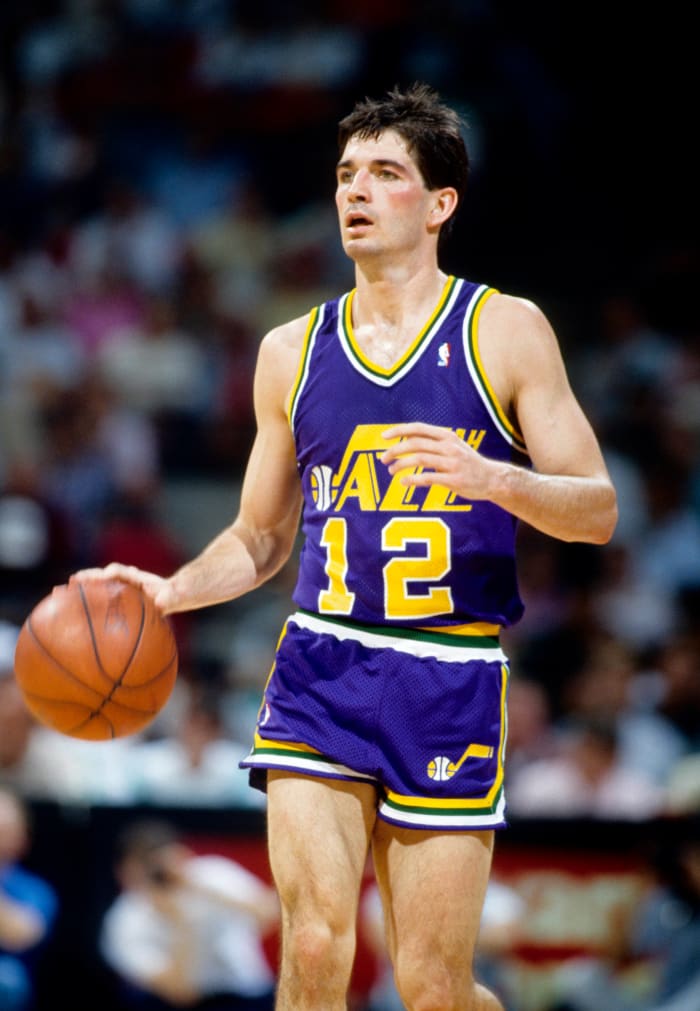
Credit: RVR Photos-USA TODAY Sports
We go from one outstanding all-time point guard to another as we break down John Stockton of the Utah Jazz. Much like Nash, Stockton’s career got off to an excruciatingly slow start as he rode the bench for the first three years of his career. After being made the full-time starter in 1987-88, Stockton would reward the Jazz with an assists title at 13.8 APG while also giving them 3.0 SPG. Stockton would win nine assists titles in a row from that point on while also bringing home two steals titles in the process.
This stretch of his career is definitely what contributed to him being the NBA’s all-time leading assist man and steals man. Over this stretch of time, he averaged 15.7 PPG, 13.1 APG, and 2.6 SPG as one of the best two-way point guards ever. Stockton would help lead the Jazz to consecutive NBA Finals appearances in 1997 and 1998 but ran into Michael Jordan and the Bulls both times. Overall, Stockton earned 10 All-Star selections, 11 All-NBA Team selections, and five All-Defensive Team selections in his 19-year career.
5. Bob Pettit
Credit: Darryl Norenberg-USA TODAY Sports
As one of the greatest power forwards in NBA history, there are many things that Bob Pettit can lay claim to. Bob Pettit is the only MVP in St. Louis/ Atlanta Hawks history as well as the only player to ever deliver a championship to the franchise. Pettit was a member of the hawks from 1955 thru 1965 and is one of the very few players to average 20.0 PPG and 10.0 RPG for the entirety of their careers. Pettit earned All-Star appearances in every season of his career and when you dive deeper, it isn’t hard to understand why.
Pettit won Rookie of the Year for the Hawks in 1955 and was immediately named MVP the following season in 1956. Over those two seasons, he averaged 23.0 PPG and 15.0 RPG. and won the scoring title in 1956 with 25.7 PPG. In 1958, Pettit led the Hawks to their only NBA championship by becoming the only man to ever take down Bill Russell in the NBA Finals. Pettit averaged 29.3 PPG and 17.0 RPG on Russell in the series. He won another MVP award in 1959 when he averaged 29.2 PPG, which led the NBA. Pettit was an 11-time All-Star, two-time MVP, and 11-time All-NBA Team selection in 11 years in the NBA.
4. John Havlicek
Credit: Malcolm Emmons-USA TODAY Sports
John Havlicek is one of the greatest basketball minds in NBA history. He embodied the spirit of Boston on the court for the Celtics as a member of their team from 1963 thru 1978. Hondo was an all-around pest on the court who could do a little bit of everything at an outstanding level. On the bench and as a starter over his first four seasons, Havlicek won four straight NBA championships, which started him on a path to one of the all-time great basketball resumes.
The Celtics would win four more championships in Havlicek’s career, giving him eight total in 15 seasons in the NBA. Havlicek’s best Finals came in 1974 when he earned the only Finals MVP award of his career. Havlicek and the Celtics would take down Kareem Abdul-Jabbar and the Bucks in a seven-game dogfight. He earned Finals MVP with 26.4 PPG, 7.7 RPG, 4.7 APG, and 1.9 SPG in the seven games. Overall, Havlicek is one of the game’s greatest two-way players as he earned 13 All-Star selections, eight NBA titles, eight All-Defensive Team selections, and 11 All-NBA Team selections in his career.
3. Dirk Nowitzki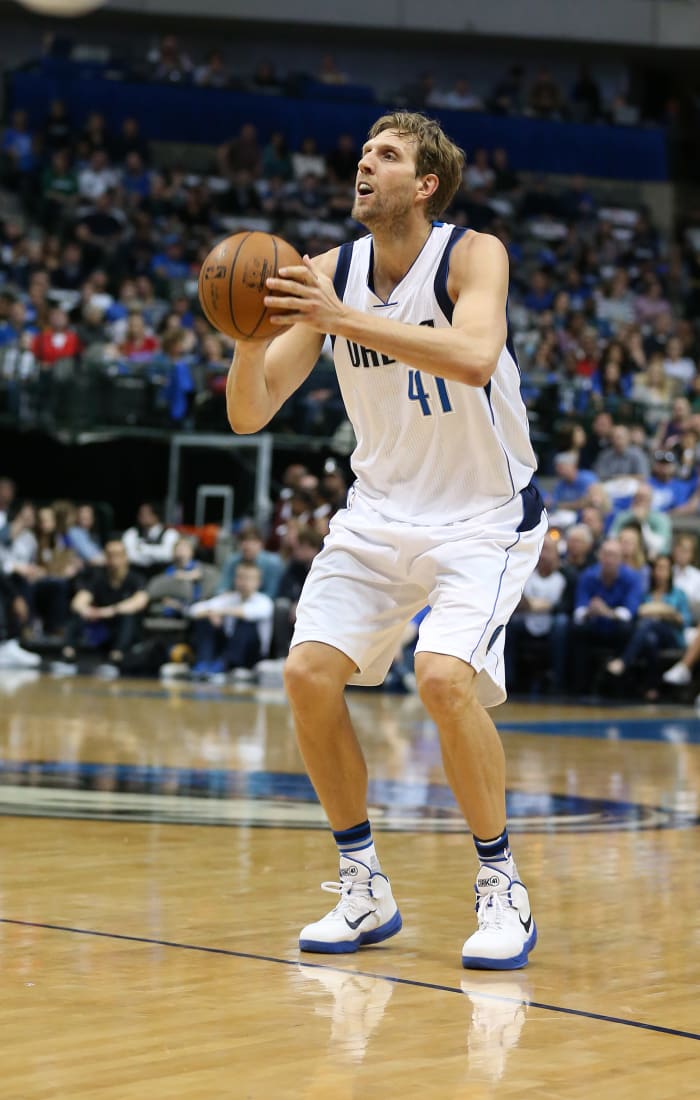
Credit: Matthew Emmons-USA TODAY Sports
Is there any player in NBA history who had more inspiration for the modern big man than Dirk Nowitzki? The short answer is no, considering Nowitzki became one of the best scorers in NBA history playing a mostly perimeter game as someone who stands seven feet tall. Nowitzki came over to the Mavericks in a draft-day deal that would change Dallas’ franchise forever. Over the next 20 seasons, we watched as Nowitzki became the greatest player in franchise history and the best big man to ever shoot the ball from a distance as he did.
It took four seasons for Dirk to become an All-Star finally but he was among the game’s best players at the time once he did. Having earned his sixth All-Star appearance in a row in 2007, Nowitzki had his sights set on something greater. He would take home the 2007 MVP with 24.6 PPG and 8.9 RPG on 50.2% shooting. His signature fadeaway earned him a reputation as an unstoppable offensive player. By 2011, Dirk was known as someone who shrank come playoff time but would put all of that to bed quickly. He led the Mavericks to their only title in franchise history in 2011, defeating some great teams along the way. He took out the Big 3 Miami Heat in six games and was named Finals MVP to cap it all off. He was also named a 14-time All-Star and 12-time All-NBA Team selection in his 20-year career.
2. Jerry West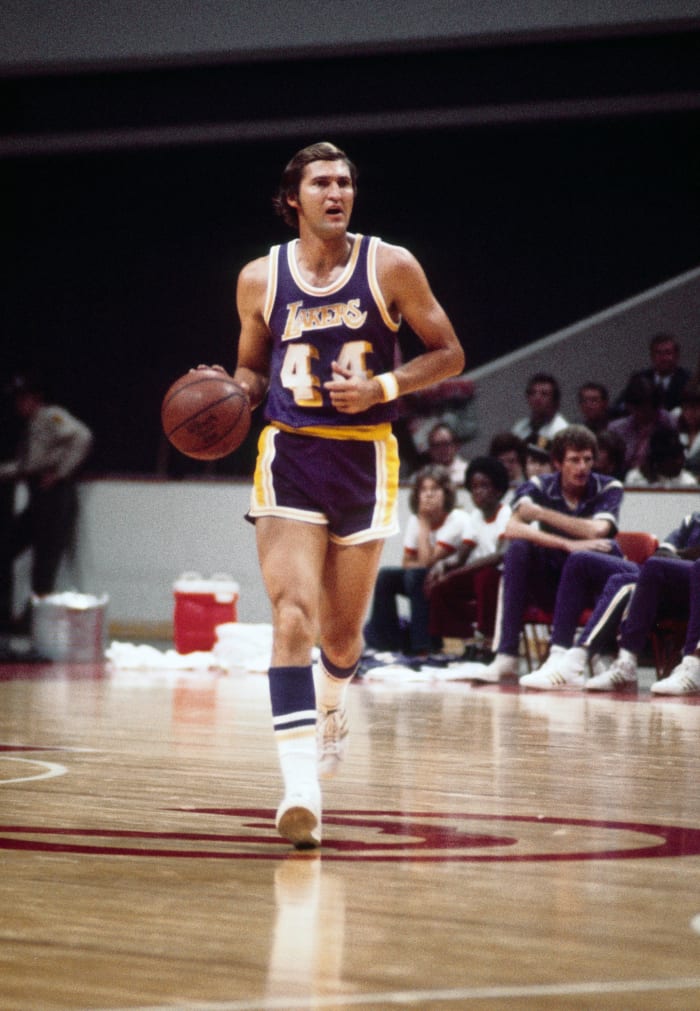
Credit: Manny Rubio-USA TODAY Sports
How can the man whose silhouette is the NBA logo not be toward the top of this list? Jerry West is one of the greatest shooters, scorers, and overall players in NBA history who ran into some bad luck as far as his playing career goes. West is one of the greatest scorers in playoff history and NBA Finals history, with some of the highest-scoring Finals averages ever. Being all of this and never being an MVP is completely unfathomable to me but here we are.
Jerry West also holds one of the worst records I think someone can hold aside from his 1-8 mark in the NBA Finals series. He is the only player in NBA history to win Finals MVP on the losing team which he did in 1969. West was legendary in his way of getting the Lakers to nine NBA Finals in his 14-year career and it went well beyond just him as to why they weren’t more successful. West did get his championship in the 1973 NBA Finals when they finally defeated the loaded New York Knicks. West’s legacy goes far beyond his Finals losses as he gave the game everything he has had as a player, coach, and general manager.
1. Larry Bird
Credit: Dick Raphael-USA TODAY Sports
This brings us to the greatest white player in NBA history and nobody can or will disagree. Larry Bird is a legend not only for his trash-talking or winning ways but for the way he and his rival Magic Johnson are credited with saving the NBA at a time when it was dying. Larry and Magic battled in college for a long time and that rivalry spilled over to the NBA and thank God it did. Bird would take home Rookie of the Year honors over Magic, but Magic would have the last laugh with an NBA title in 1980. This battle lasted for over a decade longer.
Bird was tremendous in every aspect of the game of basketball and had an unreal stretch from 1984 thru 1986 that has rarely been repeated. During this time, Bird would win three straight MVP awards, two NBA championships, and two Finals MVP awards. During the regular season, he averaged 26.2 PPG, 10.1 RPG, 6.7 APG, and 1.8 SPG over this stretch but it got better in the playoffs. He would average 26.5 PPG, 9.9 RPG, 6.5 APG, and 2.0 SPG in the playoffs over those three years, which delivered championships to the City of Boston. Larry Bird would finish his career as a Top 10 player of all time and a 12-time All-Star, 10-time All-NBA Team selection, three-time All-Defensive Team selection, and the greatest white player in NBA history.
Source: fadeawayworld



